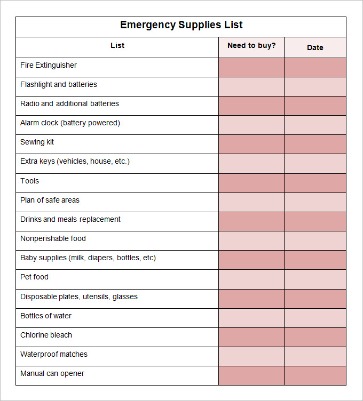
Capable inventory management and MRP software systems also automatically compile manufacturing accounting data into readily usable reports. Manufacturing accounting involves tracking the cost of goods sold, production costs, the efficiency of the manufacturing process, and the margin of profit. These details enable the production managers to attune production practices to ensure the business remains efficient in production and saves costs while maximizing returns from sales. The best accounting software for manufacturing businesses will also integrate with other software you use, such as your ERP software, CRM systems, or other modules that speak to inventory management and production. You should also be able to give access easily to any third-party professionals that may need access to your financial information, such as your tax accountant or bookkeeper.
The resulting data can then be leveraged to make informed pricing decisions, optimize production processes, and allocate resources effectively. Overall, accounting for manufacturing costs requires a specialized understanding of the unique aspects and complexities of the manufacturing industry. By employing appropriate accounting practices, businesses can accurately track costs, make informed decisions, and effectively manage their financial performance.
Total Manufacturing Cost
This accounting method tracks individual items of inventory, which is useful if you can identify each item with, for example, a serial number or RFID tag. This can produce a higher degree of accuracy, but many manufacturers are unlikely to have items that have a unique identification. This is better for high-value items that need differentiation, rather than interchangeable items. capitalizing software development costs for saas companies You need to think beyond profit and loss to manufacturing costs such as the costs of materials, plus the cost to convert these materials into products.

Move beyond ERP with Sage X3
The two common types that inventory can be arranged in light of this are the perpetual and the periodic inventory system. These articles and related content is the property of The Sage Group plc or its contractors or its licensors (“Sage”). Please do not copy, reproduce, modify, distribute or disburse without express consent from Sage.These articles and related content is provided as a general guidance for informational purposes only.
Ask a Financial Professional Any Question
This account tracks all of the raw materials or physical items necessary to create a product. The Manufacturing account can be used by businesses that produce products or goods. It is a tool that companies can use to help manage the finances and inventory of a manufacturing company. A manufacturing company differs from a merchandising company in the reporting of the cost of the merchandise (goods) available for sale and sold during the period. A manufacturing company has no need to prepare a manufacturing account, statement of production, or a cost sheet, before preparing the income statement.
The first-in-first-out (FIFO) inventory valuation method assumes that the first unit you manufacture is the first one you sell. FIFO is generally the most popular approach, especially for manufacturers of products with limited shelf lives. Because manufacturing businesses carry an inventory, the Internal Revenue Service (IRS) requires them to use the accrual basis of accounting. However, there’s an exception for small businesses with less than $26 million in average annual revenues. It would help if you had a manufacturing software solution that allows you to deal with the extra complexity of calculating inventory and the cost of your manufacturing goods.
The manufacturing process can take much longer than selling a ready-made product or running an ecommerce business. It can take months to get the raw materials you need, particularly if there are supply chain issues. Unlike other retailers who may simply buy their products from wholesalers, you’re producing a new product from start to finish, including assembling the on-premise workflows and processes to create the finished product. It helps businesses manage their finances, inventory, and cash flow and prepare for future production costs. Businesses use several manufacturing accounts, but the most common are raw material, direct labor, overhead, work in process, finished goods, and cost of goods sold. Because manufacturers carry significant inventories, they need to know how to track their costs to create accurate financial statements and comply with accounting standards.
- Businesses use several manufacturing accounts, but the most common are raw material, direct labor, overhead, work in process, finished goods, and cost of goods sold.
- This helps entrepreneurs rest assured that their firm’s statements and records, and in turn the company’s adherence to business ethics and integrity.
- This article explains what manufacturing accounting is, the types of manufacturing costs that must be accounted for, and how to accurately value production costs using different methods and technologies.
- This inventory valuation method operates under the assumption that the final product added to a company’s inventory is the first one sold.
Unlike job costing, activity costing relies on identifying all the activities in a manufacturing business and proportionately assigns the cost of activities to products based on their activity consumption. Activity-based costing or ABC costing can provide a unique picture when utilized to reveal products that generate profits vis a vis those that don’t. The business can then identify activities or production strategies that might require a revamp to ensure the profit margins are extended.
Our goal is to deliver the most understandable and comprehensive explanations of financial topics using simple writing complemented by helpful graphics and animation videos. Our team of reviewers are established professionals with decades of experience in areas of personal finance and hold many advanced degrees and certifications. The International Financial Reporting Standards (IFRS) prohibits it, and businesses in the United States may not be able to use it forever. With robust reporting features, you gain valuable insights into your operations the rules оf working with a balance sheet and useful tips and identify areas for improvement. You might find all these features – or rather, all the ones you need – in a single system. But in many cases, single-vendor software that offers near-unlimited features can be overwhelming or inefficient.
This approach is primarily beneficial for manufacturers who produce a relatively low number of unique products. For example, a manufacturer of made-to-order furniture would likely employ job costing. As a result, your manufacturing company may get to choose between using cash or accrual accounting. While the cash method is pebbles real estate reviews ratings often easier to implement, it’s not always the best way to organize your financial records. Running a manufacturing company while managing its books is a challenging prospect. Manufacturing involves a significant amount of cost accounting, which is a notoriously complex subject.